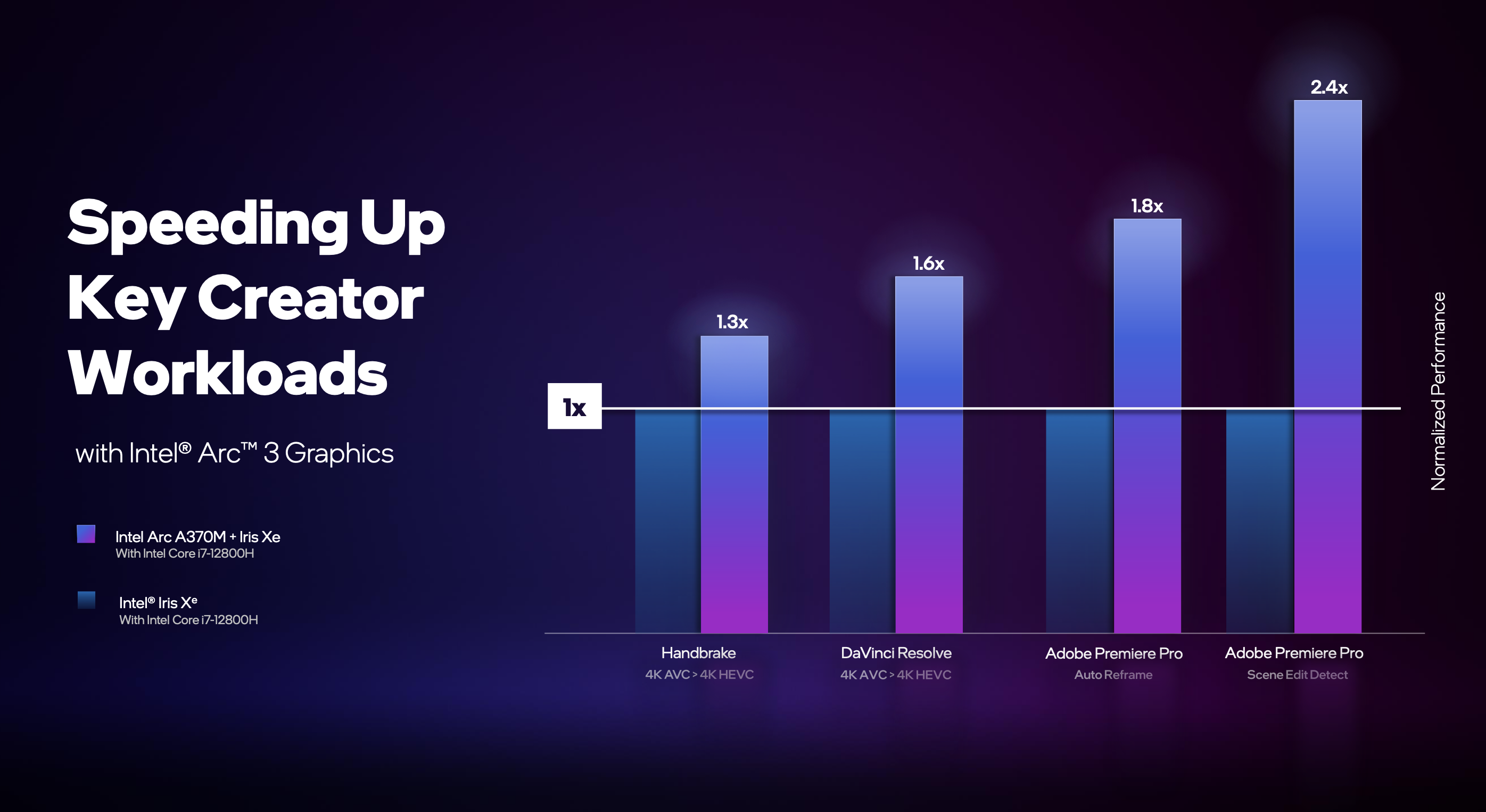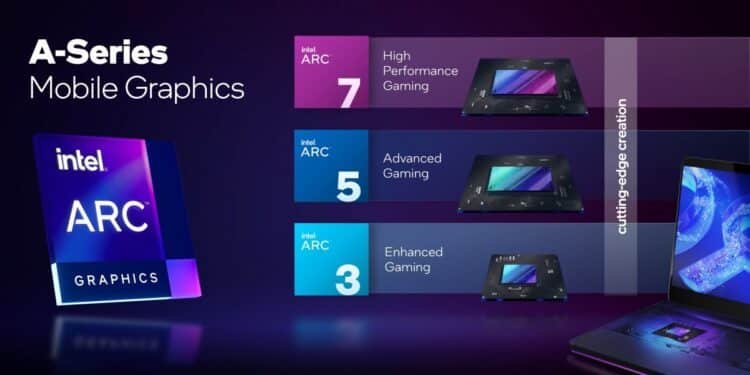In a special Livestream on Wednesday, Intel finally revealed their standalone Arc Alchemist graphics cards. The first cards to appear are designed particularly for laptops, and they’re among Intel’s most basic GPUs. However, based on reports known so far, Nvidia and AMD should be concerned.
Intel Arc Alchemist mobile range

Intel is leading the introduction with its Arc 3-class GPUs, as expected based on speculations regarding Arc Alchemist. Two variants are available, both aimed at thin and light laptops that require a dedicated graphics card. One of the first devices available, the Samsung Galaxy Book 2, was highlighted by Intel and was unintentionally shown off ahead of the announcement.
Arc 5 and Arc 7, which will be available in early summer, are the next steps up the series. Nvidia’s RTX 3080 Ti mobile could be targeted by the flagship A770M chip. Both include 16GB of RAM and a 256-bit bus, indicating how far Intel’s range may extend. Intel, on the other hand, hasn’t made that comparison.
With 32 Xe cores, 32 ray-tracing units, and 16GB of GDDR6 memory combined with a 256-bit bus, the A770M is at the top of the stack. An Xe core contains 16 vector units, each of which contains 8 ALUs/shaders. The A770M has a total core count of 4,096 as a result of this. Despite using TSMC’s N6 node, the TDP is a little on the high side.
The 115W TDP of NVIDIA’s GeForce RTX 3060 mobile, which has 3,840 cores and 6GB of GDDR6 memory, is lower than the 120-150W TDP of the A770M. The A730’s TDP has reduced to 80-120W thanks to its 24 Xe cores (3,072 shaders) and 12GB of RAM. This comes at the expense of lower core speeds (1,650MHz to 1,100MHz), fewer EUs (512-384), and a narrower 192-bit bus.
The Arc 5 A550M is a mid-range processor with 16 Xe cores or 2,048 ALUs and 8GB of GDDR6 memory connected to a 128-bit bus. It has a TDP of 60-80W and boosts to just 900MHz.
Arc 3 GPUs, according to Intel, compete with cards like the RX 6500M. In reality, this means gaming at 1080p with medium settings and a frame rate of at least 60 fps (fps). According to Intel’s first-party benchmarks, Arc 3 GPUs can achieve 60 frames per second at 1080p. With the lowest prices, they have a 64-bit bus, 4GB of GDDR6 memory, and 6-8 Xe Cores (1,024 ALUs). These will compete with NVIDIA’s GeForce GTX 1650 mobile, which has been the company’s most popular GPU for several generations.
Before drawing any judgments about performance, we always recommend waiting for third-party benchmarks. Intel’s tests, on the other hand, show respectable performance in even the most demanding games, such as Hitman 3 and Doom Eternal.

Intel Arc vs Nvidia’s mobile GPUs
In comparison to Nvidia’s mobile products, Intel’s Arc Alchemist takes a unique approach. Nvidia gives laptop manufacturers a variety of power restrictions for their graphics cards, which makes a significant difference in performance. That’s why the Gigabyte Aero 16’s RTX 3080 Ti doesn’t perform as well as the MSI Raider GE76’s. Intel is also offering a range for selection, however, the company noted that the specifications stated are for the lowest graphics power feasible. As a result, most GPUs should outperform Intel’s stated specifications.
Availability
All Arc Alchemist mobile graphics cards, like their desktop counterparts, offer hardware ray tracing, variable-rate shading, and Intel’s XeSS upsampling technology. XeSS, although unveiling new titles that will support the feature, such as Ghostwire Tokyo and Shadow of the Tomb Raider, will not be available until early summer, according to Intel.
Arc Control
Along with the graphics cards, Intel also revealed more information about the software that supports them. According to Intel, Arc Control is a one-stop-shop for drivers, tuning, and gaming settings. It’s comparable to Nvidia GeForce Experience in that it acts as an overlay. Arc Control, unlike GeForce Experience, does not require users to log in.
Arc Control is primarily a delivery system for drivers, but Intel claims it will also display system performance statistics and provide tools for broadcasters. You can employ A.I.-enhanced camera capabilities like background blur, backdrop replacement, and auto framing to stream directly from the software. Intel also stated that customers can alter performance with desktop graphics cards, implying that overclocking capabilities will be available.
The first Intel Arc Alchemist laptops are on the market today, with many more to follow before the other cards come this summer, according to Intel.



















